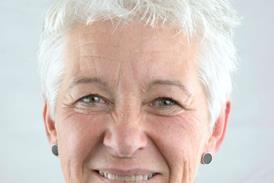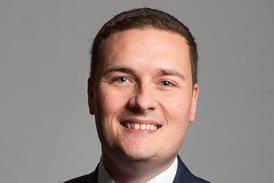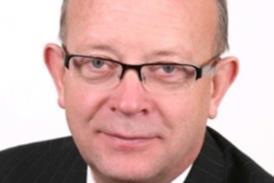A partnership in South Staffordshire has demonstrated how the health economy could work collaboratively to address winter pressures, reports Emma Dudman

More than 850 days of care were provided to patients at home instead of in hospital during a six-month pilot commissioned by South Staffordshire Primary Care Trust.
Primecare, a provider of health and social care services, was contracted to deliver the pilot in partnership with NHS acute and community services.
Mid Staffordshire Trust and Burton Foundation Trust agreed to help identify patients who could receive care at home – if the right community support was in place to meet both their medical and social care needs.
‘We aimed to identify those patients whose needs could be met in the community and to provide bespoke packages of care to allow early supported discharge’
The pilot saw the establishment of an early supported discharge (ESD) service where Primecare coordinated the discharge of appropriate patients into community provision via the South Staffordshire hub and link nurses based in local acute hospitals; and provided its own multidisciplinary teams to offer an ESD pathway of care closer to home.
Single point of access
The hub is a nurse-led, single point of access service, which aims to save clinical time by signposting staff to services which support urgent care patients to remain at home via comprehensive care packages.
The ESD pathway aimed to provide up to 10 days’ of care to patients whose needs could not otherwise be met in the community because capacity or capability was unavailable.
South Staffordshire emergency and urgent care network supported the pilot, which ran from October 2011 until March 2012. Funding of about £329,000 came from the PCT’s reablement allocation.
Chris Oliver, urgent care lead for South Staffordshire primary care trust at the time of the pilot, says: “This project focused on maintaining the flow of the acute system during the winter. We aimed to identify those patients whose needs could be met in the community and to provide bespoke packages of care to allow early supported discharge.”
The aim of the ESD pilot was to reduce length of stay in the acute sector for appropriate patients and improve patient outcomes and experience.
It recognised that especially for frail older people, extended stays can increase the risk of institutionalisation. In total 84 per cent of those discharged to the ESD pathway were aged over 70.
Care at home
The service was commissioned to discharge and provide up to 10 days of care at home to adults whose diagnosis was compatible with the NHS Institute for Innovation and Improvement’s ambulatory emergency care pathways.
These pathways include conditions such as chronic obstructive pulmonary disease, cellulitis and elderly patients who have suffered falls.
It was essential the pilot was supported by acute and primary care staff. The PCT worked with hospital consultants, community service providers and GPs via the local medical committee to achieve engagement.
This included developing a memorandum of understanding with hospital physicians around clinical accountability once a patient entered the ESD service. Key points included that GPs be notified when a patient entered the ESD pathway and be made aware of delayed transfers.
A patient representative was invited to attend service development meetings and was able to influence its design.
A dynamic model
Once the service was operational the model evolved to meet the needs of patients. Primecare, hospital consultants and commissioners met weekly to ensure agreed pathways were being implemented and any gaps in care addressed.
This included broadening the criteria for acceptance into the pilot to reflect clinician insight and real-time data on the presenting patterns of patients attending A&E.
This resulted in the ESD service being able to administer some intravenous medications at home and altering the service model for visiting patients who needed lifting or hoisting. The action-learning approach encouraged the service specification to be adapted so that patients with severe mobility issues could receive up to four visits a day from two carers.
In addition, patients on end of life care pathways became eligible for the scheme. End of life care was not included in the initial criteria, but it was recognised that this patient group could clearly benefit from the service where locally commissioned services did not have immediate capacity to deliver care at home for dying patients.
As the project progressed the ESD service was also able to extend the 10 day pathway limit for care. This allowed for instances where no alternative provision in the community was available and discharging the patient from the pilot could result in an inappropriate readmission.
Analysis shows that the majority of patients accessed the ESD service for 5.91 days. Yet for the 22 patients exceeding 10 days of care, the average length of care was 15.6 days. In total, this extension of the original criteria avoided 22 readmissions and saved 345 acute bed days.
Learning from the experience
By the end of the pilot the link nurses had reviewed 608 patients viewed as potentially suitable for discharge into the community. In total 73 per cent of these referrals were from Queen’s Hospital or Stafford Hospital.
Of these patients, 435 were safely discharged with appropriate care packages to local community teams. The ESD service provided care at home to an additional 125 patients.
‘Clinical engagement is vital and must start as early as possible’
Although the ESD service aimed to offer clinical care at home, allowing patients to be discharged from hospital earlier than expected, in practice the majority of care packages responded to social care needs. However, the ESD service was able to save 177 excess bed dates.
This was done by providing care packages to discharge a number of patients earlier than expected, whose length of stay had already led to them exceeding so called ‘trim points’ within the healthcare resource group tariff determining payment for their treatment.
Mr Oliver adds: “By the close of the project patients with higher levels of acuity were being referred to the service. However it took a lot of time to build that trust between clinicians and to achieve confidence in the service. Certainly that’s a key learning point, that clinical engagement is vital and must start as early as possible.”
Communication is crucial
Primecare’s operations director for urgent care, Tom Elrick, says: “Communication was crucial, not just talking to consultants but face-to-face meetings with all frontline staff who could refer patients, so they knew us and how to work with us.
“We built effective relationships but over a longer period of time these would have been stronger and we think that would impact positively on the service.”
Key learning points
- Be open to new providers – The private sector enabled us to recruit multidisciplinary teams within short timescales, something the NHS struggles with. Partnering with a non-NHS service also brought new ways of working and capabilities.
- Be prepared to change your rules – The action-learning approach gave us the scope to be flexible and change the functionality of the service, for example broadening the criteria for patients eligible for the pathway. Ongoing review is essential to maximise results.
- Engage, engage, engage – Stakeholder engagement is essential if a service is to reach its potential. Partners need to build relationships across teams and these teams should ideally be co-located where possible.
Prior to the pilot’s launch some GPs had expressed concern about how the scheme might impact on their caseloads. Yet only 4.1 per cent of patients consulted their GP in the 30 days following their discharge. Similarly, there were just 15 readmissions to hospital from patients on the pilot within 30 days.
The majority of these patients were admitted with the same condition as their original spell including acute renal failure, vascular dementia and congestive heart failure.
Measuring success
Patient satisfaction surveys showed that 83 per cent of those who experienced the pilot were satisfied or very satisfied with their care.
Throughout the six-month pilot referrals exceeded the anticipated 80 per month, with a peak in demand during January, which saw 130 referrals.
South Staffordshire PCT is committed to implementing learning from the pilot and using it to inform future commissioning decisions. This includes recognising that effective communication between the ESD service and the existing South Staffordshire Hub was essential to effectively coordinate patients’ care packages and to fully utilise capacity within the community.
Mr Oliver adds: “Action-learning gave us the opportunity to find and trial real-time solutions. It confirmed what we know, that to meet patients needs and provide better care we need to do more in the community. It is simply the way forward.”




























No comments yet